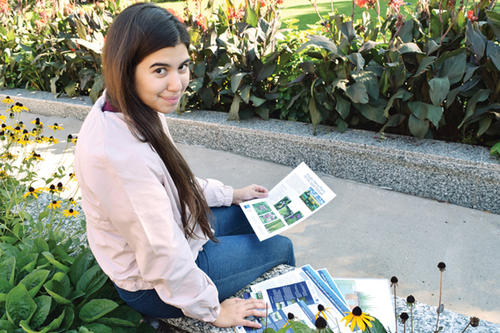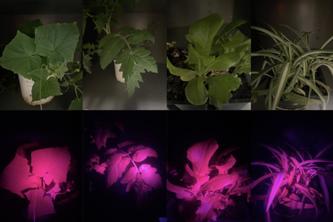
“My grandmother didn’t have running water,” says College of Science and Engineering senior Maria Camila Merino Franco, a native of Colombia. “And I remember when I was in first grade, our school mascot was a drop of water.”
Now, Merino Franco has found a niche safeguarding water for future generations. A student in the Department of Bioproducts and Biosystems Engineering (BBE), she worked with BBE research professor Joe Magner to improve water quality in ponds and lakes. From May to November, she managed several specially designed “floating wetland” islands in a stormwater retention pond in suburban Vadnais Heights and at Fleming Lake, about 55 miles west of Duluth.
The floating islands are a buoyant matrix structure made of recycled plastic and covered by various native wetland plants.
“The roots grow below the matrix, so they’re just floating in the water,” Merino Franco explained.
The roots gather algae and microbes and “absorb a lot of phosphorus and nitrogen,” thereby helping clean the water around them. The microbes hosted by the roots also provide a food source for aquatic wildlife. In accomplishing this, Marino Franco spent much of her time taking drone pictures, measuring native wetland plant growth, and building fences to keep geese from pulling up the carefully cultured plants.
Perhaps most encouragingly, however, at Fleming Lake she managed to win over a skeptical local who at first opposed the islands but ended by offering to “adopt” an island next year.
- Categories:
- Agriculture and Environment





